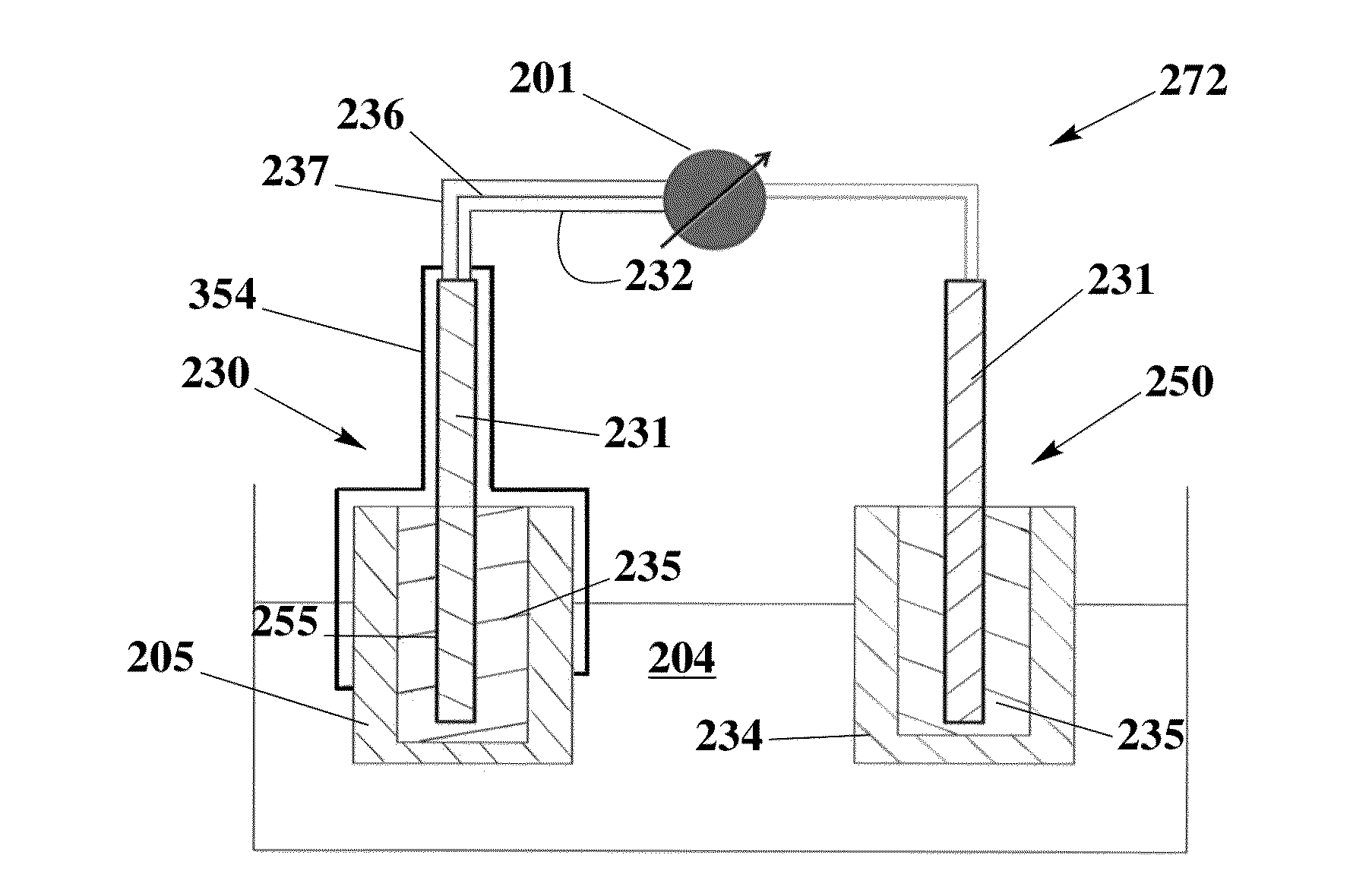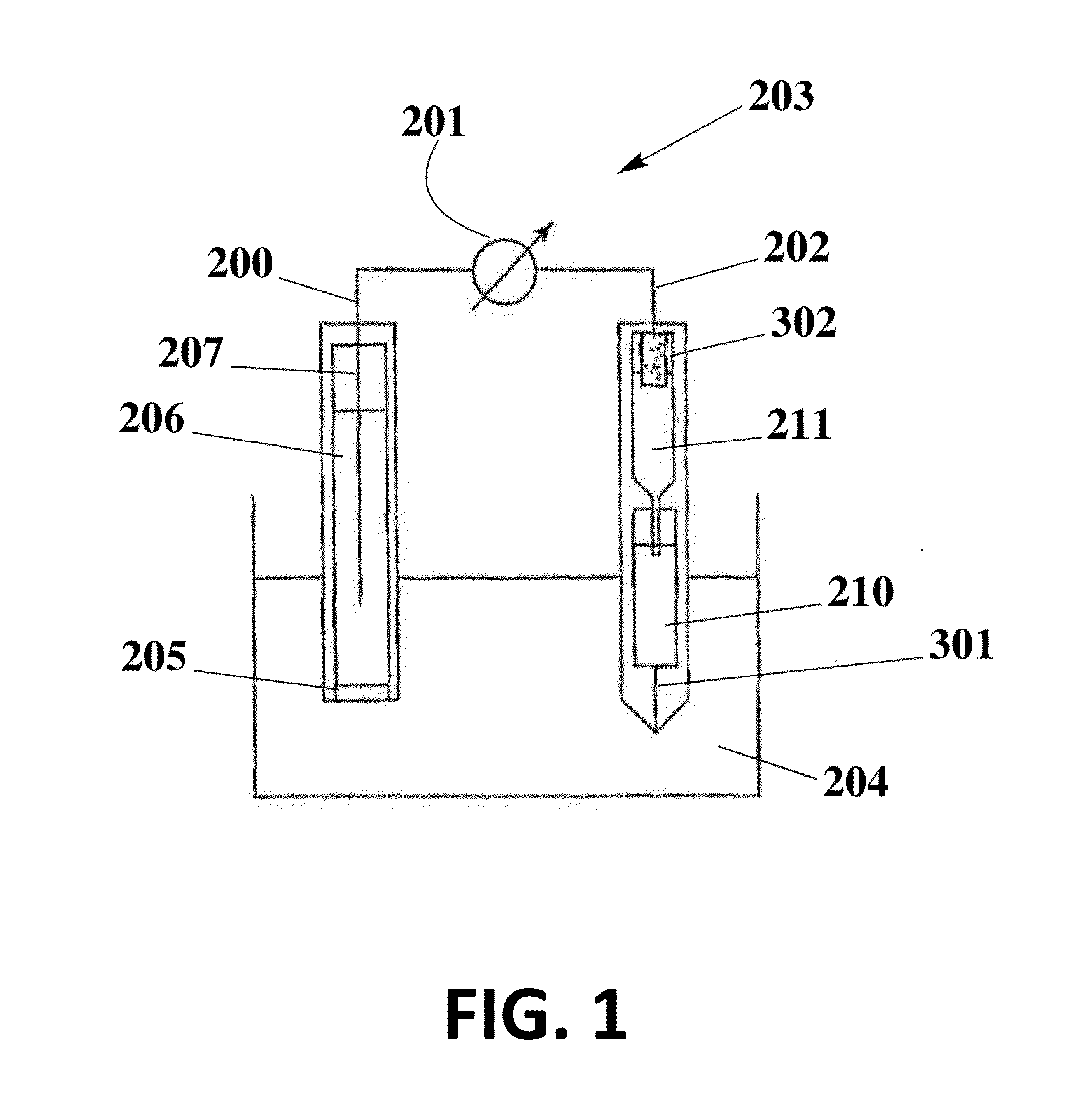Sensor Apparatus
a technology of sensor and insulating conductor, which is applied in the direction of power cables, cables, insulated conductors, etc., can solve the problems of insufficient resistance of the system to high pressure, unstable response of these sensors, and miniaturization of ises
- Summary
- Abstract
- Description
- Claims
- Application Information
AI Technical Summary
Benefits of technology
Problems solved by technology
Method used
Image
Examples
example 1
[0077]FIG. 14 shows an example of a calibration curve for some of the devices described above. The devices described in FIG. 3, FIG. 6, and FIG. 10 were fabricated. The working electrode was formulated to be selective for chloride. This figure shows that we are able to get a Nernstian response and use the devices with traditional chloride sensing membranes.
example 2
[0078]FIG. 15 shows a fluorous sensor for PFOS using the device constructions detailed in FIG. 4, FIG. 6, and FIG. 10. Low limits of detection and Nernstian responses were obtained.
[0079]The fluorous ion selective cocktail was applied onto the PTFE membranes.
[0080]Cocktail: linear perfluoropolyether solution of 0.25 mM tetraalkylphosphonium and 1 mM electrolyte salt (fluorophilic tetraalkylphosphonium as cation and tetraphenylborate as aninon).
[0081]Conditioning process: The electrodes were first condition in 1 μM PFOS-K+ for 2 days and 0.1 nM PFOS-K+ for another 2 days.
[0082]The calibration curve was obtained by addition from 10−10 M PFOS-K+. Detection limit was determined as 4.63E-9 M.
example 3
[0083]The solid contact reference electrode 250 is prepared using an ionic liquid for the potential of miniaturization, elimination of liquid junction 301 and dryness of inner electrolyte solutions, and therefore improvement of performance and lifetime.
[0084]To prepare the electrode, a graphite carbon rod (d=7 mm) is inserted into a heatshrink tube to avoid the contact with sample solution and therefore the shortcut. One of its end is soldered with metal wire for the connection to cable. Another end is well-polished and covered with poly(octyl thiophene) (POT) by drop casting its solution (POT is dissolved in chloroform at a concentration of 0.25 mM). After it is dry, new solution is added and this process is repeated for three times. The reference electrode membrane is ortho-nitrophenyl octyl ether (o-NPOE) plasticized poly-(vinyl chloride) (PVC) membrane doped with the ionic liquid 1-methyl-3-octylimidazolium bis(trifluoromethylsulfonyl)-imide (IL). For the best performance, PVC / I...
PUM
| Property | Measurement | Unit |
|---|---|---|
| MW | aaaaa | aaaaa |
| cure time | aaaaa | aaaaa |
| hydrostatic pressures | aaaaa | aaaaa |
Abstract
Description
Claims
Application Information
 Login to View More
Login to View More - R&D
- Intellectual Property
- Life Sciences
- Materials
- Tech Scout
- Unparalleled Data Quality
- Higher Quality Content
- 60% Fewer Hallucinations
Browse by: Latest US Patents, China's latest patents, Technical Efficacy Thesaurus, Application Domain, Technology Topic, Popular Technical Reports.
© 2025 PatSnap. All rights reserved.Legal|Privacy policy|Modern Slavery Act Transparency Statement|Sitemap|About US| Contact US: help@patsnap.com



